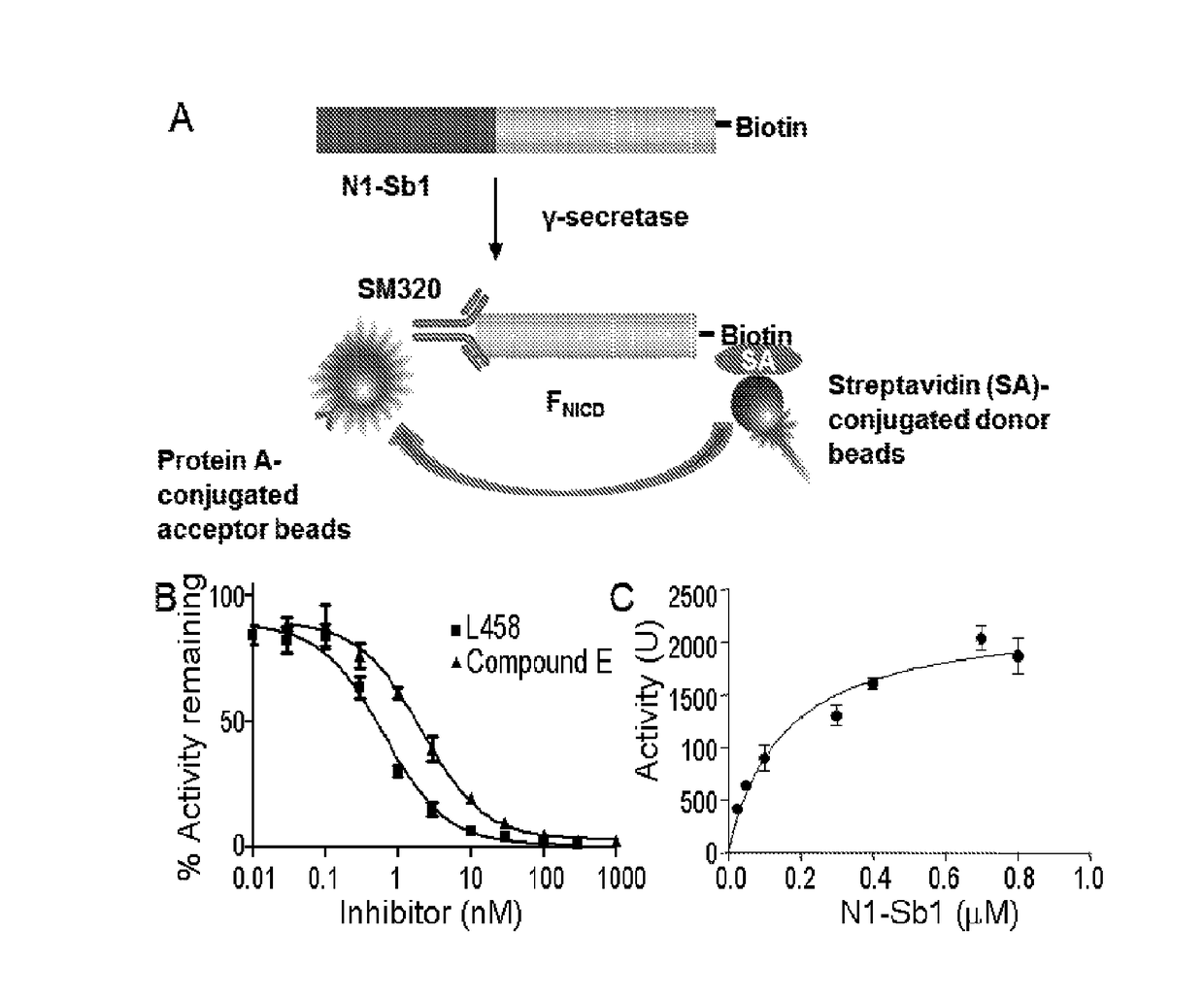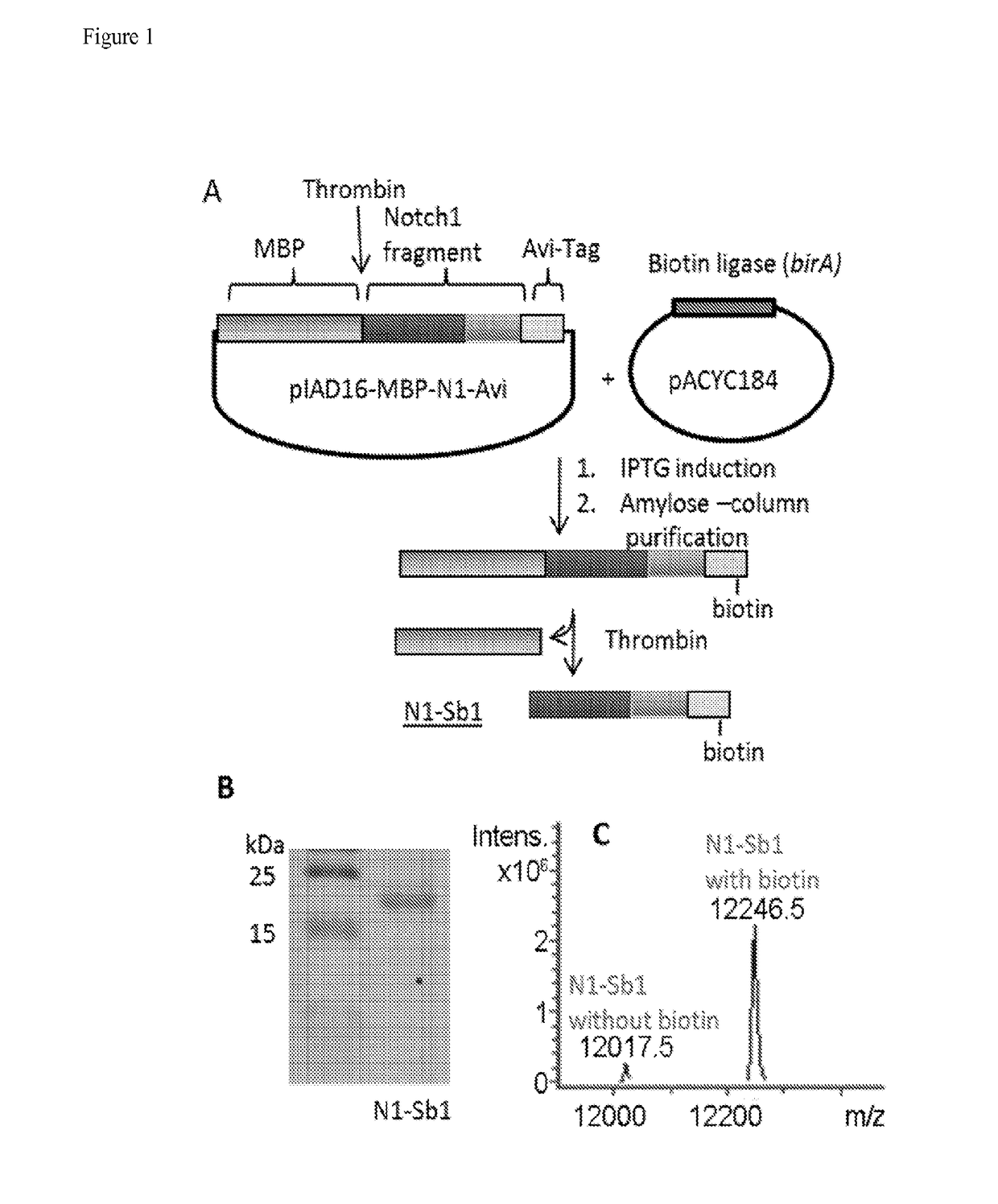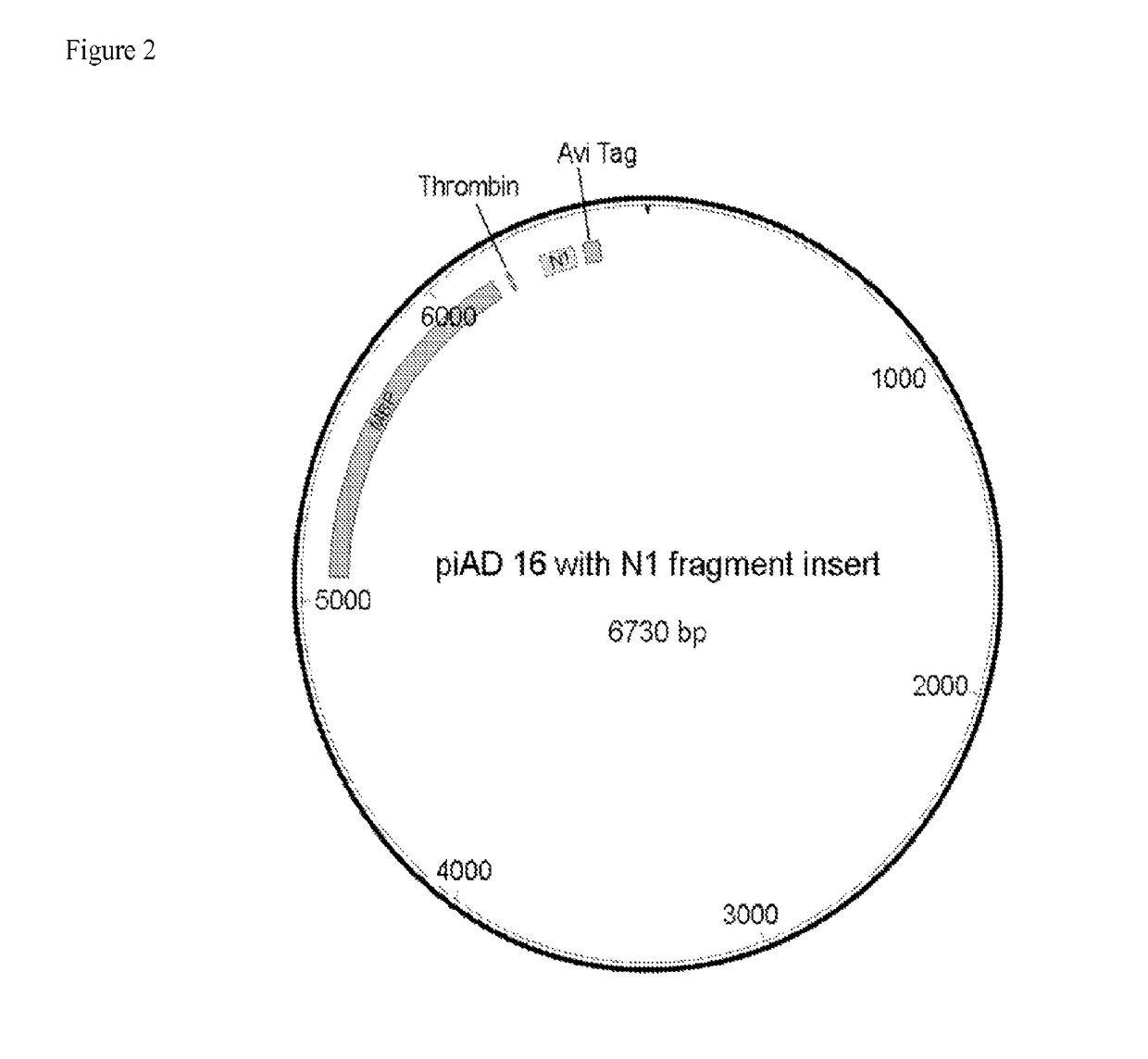Methods and compositions for gamma-secretase assay
a gamma-secretase and composition technology, applied in the field of compositions and methods for measuring gamma-secretase, can solve the problems of limited application of western analysis-based assays for characterization, and achieve the effect of modulating the activity of ps1 and improving the characterization of -secretas
- Summary
- Abstract
- Description
- Claims
- Application Information
AI Technical Summary
Benefits of technology
Problems solved by technology
Method used
Image
Examples
example 1
The SM320 Antibody Specifically Recognizes γ-Secretase-Cleaved Notch1 Substrate
[0198]The SM320 polyclonal antibody directed against the Notch cleavage product epitope (VLLSRKRRRC) was generated as described in Experimental Methods and its specificity determined. The SM320 antibody was purified by conjugating the epitope peptide to an affinity column and capturing the specific antibody, as described.
[0199]HEK 293 cells were transiently transfected with truncated Notch1-ΔE construct including cmyc (N1-ΔE), a substrate of γ-secretase that is independent of ligand activation, as described in Experimental Methods. Transfected cells were treated with either DMSO vehicle or Compound E, a potent γ-secretase inhibitor. Cell lysates were analyzed by performing SDS-PAGE and immunoblotting the result with anti-myc and SM320 antibody (FIG. 6A). The expression of the myc-tagged N1-ΔE protein was confirmed with anti-myc antibody. N1-ΔE was detected only in cells transfected with this construct (FI...
example 2
Development of a Biotinylated Recombinant Notch1 Substrate and an In Vitro γ-Secretase Assay
[0201]It has been previously demonstrated that biotinylated recombinant APP substrates are suitable for the development of robust γ-secretase assays (21-23; co-pending application U.S. Ser. No. 12 / 776,141). In order to develop a similar ELISA-like assay based on Notch, an AviTag and a maltose binding protein (MBP)-thrombin cleavage site tag were appended to a Notch1 protein fragment (residues 1733-1812) coding sequence (see Experimental Procedures). The product is designated MBP-N1-Sb1 (FIG. 1A). E. coli cells were co-transformed with this plasmid as well as the pACYC184 plasmid, which encodes biotin ligase, in the presence of biotin. Expression of biotin ligase during induction catalyzes the attachment of biotin to the AviTag. The MBP tag was removed from N1-Sb1 by thrombin cleavage and the product was analyzed by SDS-PAGE and LC-MS. The apparent molecular weight of N1-Sb1 in SDS-PAGE was la...
example 3
PS1 FAD Mutations have Distinct Effects on Notch1 Cleavage
[0204]The effects of PS1 FAD mutations on Notch cleavage were determined using the new γ-secretase assay described in Example 2. The activities of two PS1 FAD mutations—PS1 M146L and E280A were compared against wild-type PS1 (WT), which has been previously studied (25). Total membrane was isolated from N2a cells that stably express WT, M146L, or E280A mutants. N1-Sb1 was incubated with these membranes and the resulting cN1-Sb1 was detected with SM320. A significant reduction was observed in N1-Sb1 cleavage by both PS1 FAD mutants compared to the wild-type PS1. The M146L and E280A mutants had 40% and 14% activity remaining, respectively, compared to the activity of the wild type (FIG. 7A). To compare the effects of these two PS1 FAD mutants on APP cleavage, similar experiments were carried out using the APP substrate Sb4 (25) (see co-pending application U.S. Ser. No. 12 / 776,141). It was found that M146L and wild-type PS1 have ...
PUM
| Property | Measurement | Unit |
|---|---|---|
| molecular weight | aaaaa | aaaaa |
| molecular weight | aaaaa | aaaaa |
| molecular weight | aaaaa | aaaaa |
Abstract
Description
Claims
Application Information
 Login to View More
Login to View More - R&D
- Intellectual Property
- Life Sciences
- Materials
- Tech Scout
- Unparalleled Data Quality
- Higher Quality Content
- 60% Fewer Hallucinations
Browse by: Latest US Patents, China's latest patents, Technical Efficacy Thesaurus, Application Domain, Technology Topic, Popular Technical Reports.
© 2025 PatSnap. All rights reserved.Legal|Privacy policy|Modern Slavery Act Transparency Statement|Sitemap|About US| Contact US: help@patsnap.com



